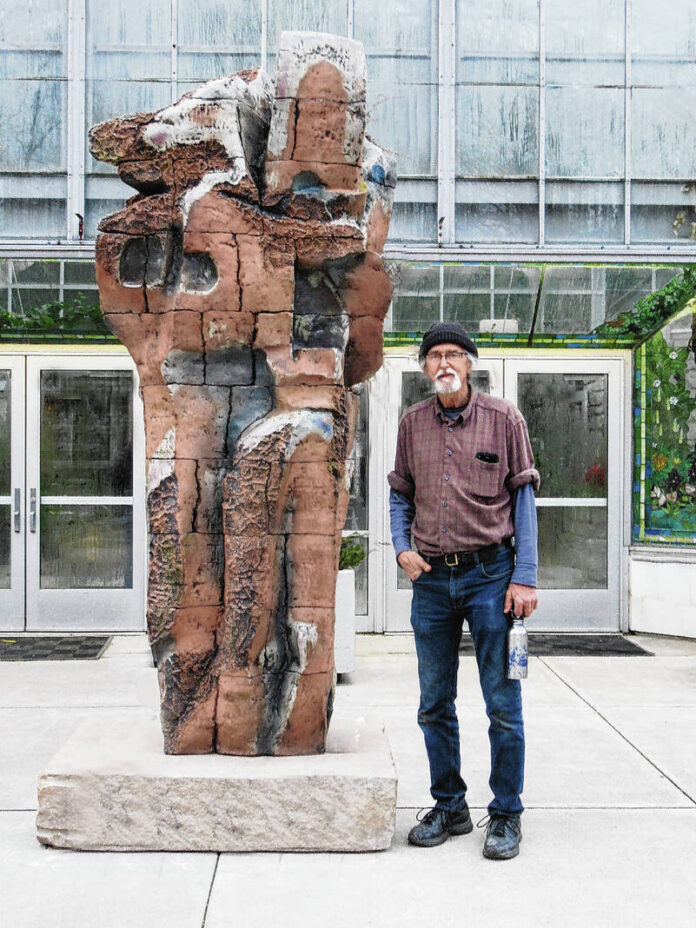A Columbus artist is one of three whose work is being showcased in a unique exhibit of ceramic garden sculpture through June 18 at the Krohn Conservatory in Cincinnati.
Acclaimed Columbus ceramic artist Robert Pulley’s work is featured as a public-scale piece outside the main entrance to the Krohn. The 9-foot-tall piece is assembled from 51 modular pieces, and welcomes visitors to the conservatory throughout the run of the exhibit titled “Ceramicus sculptus ‘Krohn’ ∙ Ceramics in a Garden”.
Pulley’s work is exhibited alongside work by Cincinnati ceramic artists Roy Cartwright and Lisa Merida-Paytes.
“The three artists in this show are established professionals whose work has been widely acclaimed,” said curator Mary Heider. “Ceramicists who create outdoor garden sculptures are few, and fewer still construct work on a large scale. Robert Pulley will display two such pieces. One with a height of 9 feet will be outside on the Krohn entrance plaza. Pulley’s modular method of assembly (think Legos) is also unique. All his sculptural forms reflect nature’s influence and energy.”
The exhibit features more than 70 unique pieces of ceramic sculpture created in stoneware suitable for outdoor display, all of which is be available for purchase. All of the pieces are designed for homes, gardens, and large public spaces.
Pulley credited curator Heider for cultivating an unusual show. “She has a really focused eye on relationships between the work and the garden,” he said.
The exhibit that opened in January also coincides with the annual National Council on Education for the Ceramic Arts annual convention in Cincinnati, which wraps up its three day run today.
The setting of the Krohn Conservatory showcases outdoor ceramic artwork amid a diversity of plant life that thrives in a range of natural environments. The conservatory’s different garden-like settings allow visitors to discover the harmony that can exist between a piece of ceramic sculpture and natural elements, according to Heider.
The plant houses, in which the light changes with the hour of the day and the seasons of the year, simulate the ambience of a garden, where a piece of sculpture can appear to be different every time it is seen. Heider said Pulley and the others artists in the show present a range of work, realistic to abstract, large and small, that will offer viewers the opportunity to discover a favorite and consider bringing sculpture into their own gardens.




